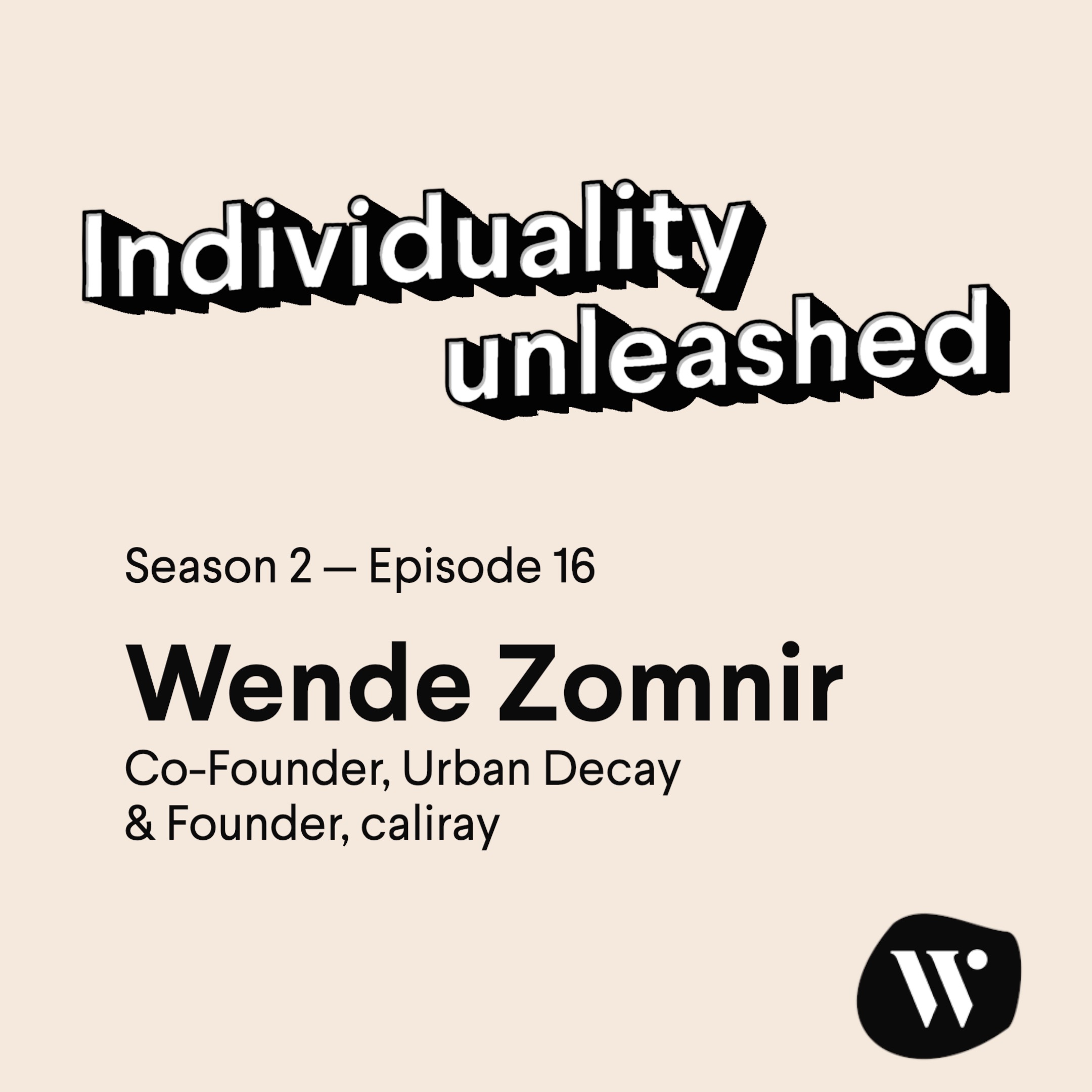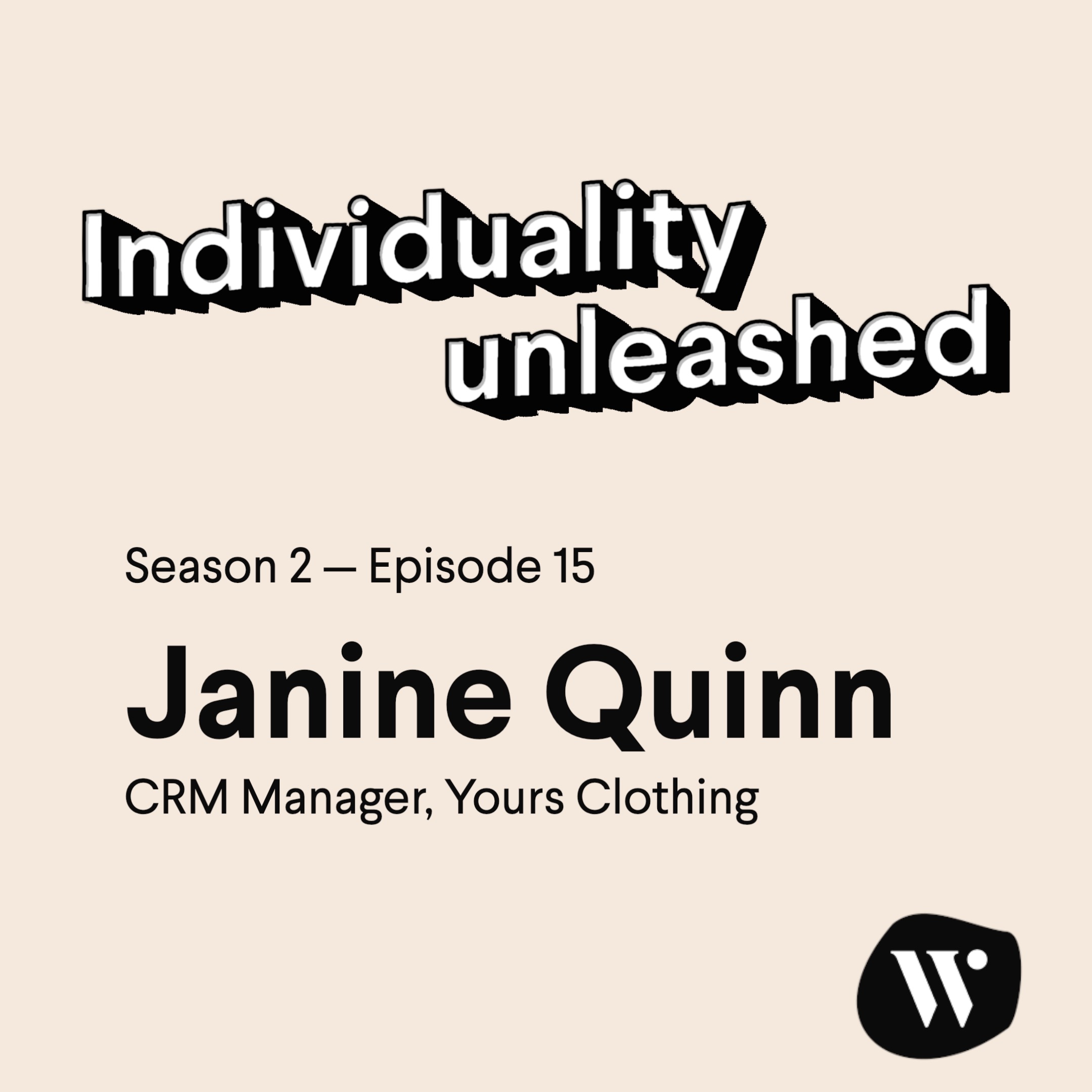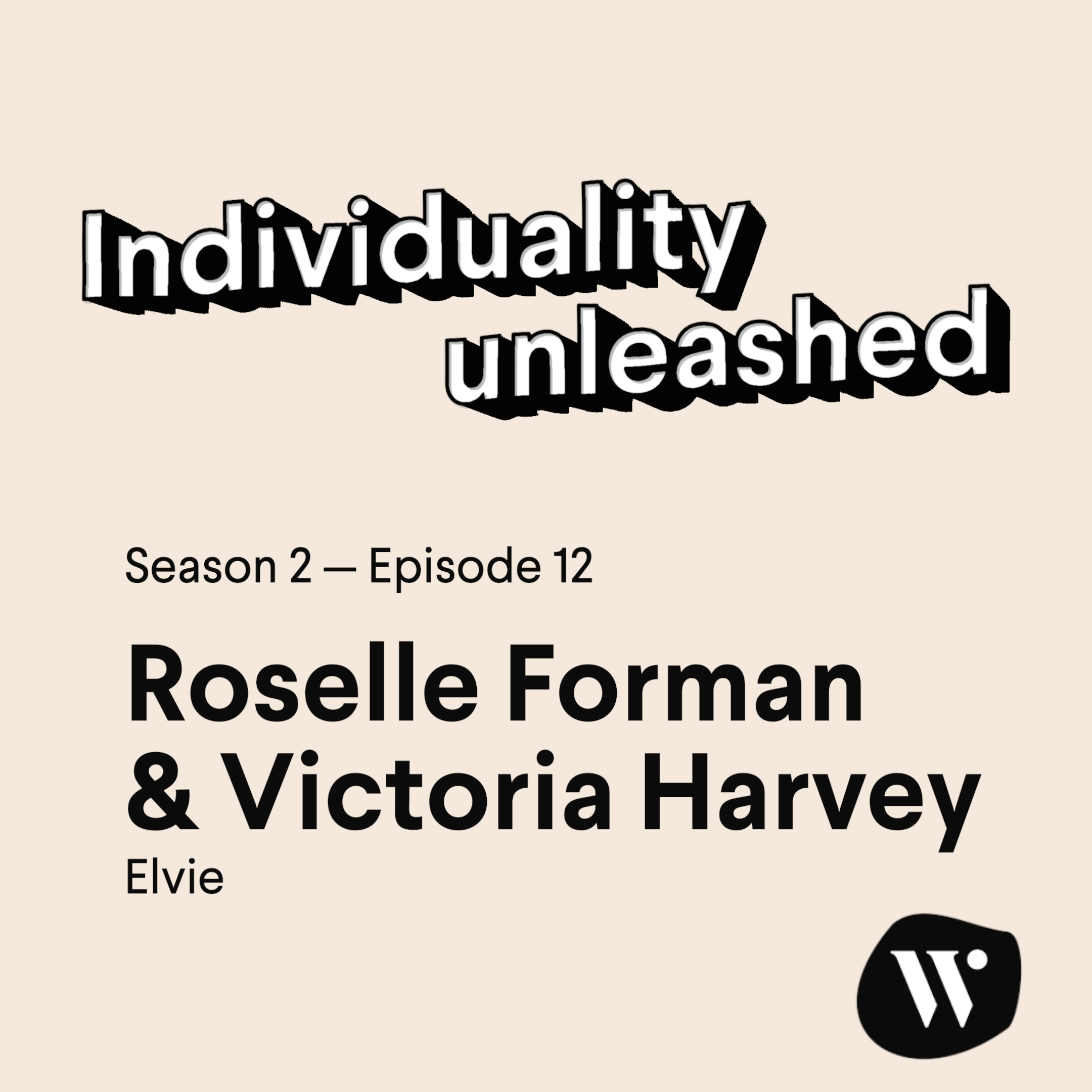The Economics of Loyalty with Vadim Grinberg, Prescient AI
- 0.5
- 1
- 1.25
- 1.5
- 1.75
- 2
Vern Tremble: Hey, everybody. Welcome to another episode of Individuality Unleashed. I'm Vern Tremble, senior director of marketing here at Wunderkind, and today I'm joined by my good friend, Vadim Greenberg, who's the head of client success at Prescient AI. Vadim, welcome. So glad to have you on the podcast today.
Vadim Grinberg: Hi, glad to be here.
Vern Tremble: I'd love for you to introduce yourself to the people. Tell them who you are.
Vadim Grinberg: Sure. Yeah. My name's Vadim. I've been in consumer marketing for about 16 years now. I started out in customer research for a company called Cantar World Panel. We worked with mostly FMCG brands, so like personal care, beverages, that sort of stuff. Really just collecting data and understanding what was going on with those customers. And then I had an opportunity in 2014 to switch to startups in D to C. The reason I left is I just wanted something more interesting and try to build something, be a part of something, and when you build something, you end up having to learn everything from scratch a lot. So my first company was Dagney Dover, a Handbag and Accessories brand. And I essentially built the growth engine there because I had the opportunity to learn how to run a business, do all the things that are fun to do. And from that and the success there, I got the opportunity to work for Hatch Collection, maternity clothing brand, and I led everything digital there. So not just growth and paid marketing, but also e- commerce, all the work with the marketing team in terms of building retention and emails, et cetera. All the little pieces that go in. We actually used Wunderkind by the way, when we were there. And then from that opportunity, I got the chance to work at Maude, which is a sexual health and wellness brand. And there I worked very, very closely with the founder and CEO, Eva. And really it was all revenue and just really trying to figure out how to grow the business entirely, not just through digital means. So kind of little step changes up, but every part of the way I was a part of a lot of marketing ops and a lot of conversation about LTV and loyalty.
Vern Tremble: Really cool. So Vadim is not going to toot his own horn, but I will. He is an expert, so...
Vadim Grinberg: Thank you. Okay, I'll take it.
Vern Tremble: Today I want to talk about a really interesting topic. It's the economics of loyalty and performance marketing. Right now we are facing an unprecedented time with what we consider to be a retail recession that is brought about by the fact that we are facing an impending global economic downturn. A lot of our marketers out there are just recovering from the pandemic and being successful during those trying times, but now we're facing another crisis that could impact the way in which they do business and they drive revenue. So what I'd love to discuss with you today and help our audience out there understand is what strategies can they deploy specifically around loyalty, which is an often misunderstood subject when it comes to performance marketing, retention and loyalty, just overall marketing strategy. And have you shed some light and add your expertise to the conversation to really help marketers and brands out there thrive during this difficult time?
Vadim Grinberg: Yeah, I'd be happy to. I have probably too much to say.
Vern Tremble: We want you to say it all.
Vadim Grinberg: Okay, great.
Vern Tremble: We'll chop it up in post.
Vadim Grinberg: Got it, got it, got it.
Vern Tremble: So can you walk us through what we mean by customer loyalty and why is it important?
Vadim Grinberg: Well, I think I have to back up one minute to how brands and companies have been affected by what you just talked about. Yes. By the economic downturn, by complexity in marketing and really the outcome of what happened since I was 14 five and global recession and economic downturns because of Covid. What it's really done is it's created lack of trust in platforms and lack of real clear planning strategy to be able to hit numbers the way that people used to. I mean, obviously there are tons of smart marketers who are making the best of it that they possibly can, but it's not. It's fundamentally different. And there's a couple things that have really changed, and one of those is people have to go higher up in the funnel now than they used to before. So a lot of focus is being shed on those parts of the more traditional advertising funnel. Before digital marketing, before Facebook and Instagram got you where you needed to go faster, people had to do a lot of upfront work, right? So people are... Brands now are reliving that scenario.
Vern Tremble: So it's a return to a golden age of marketing.
Vadim Grinberg: I don't know if it's ever been a golden age, but Sure, yeah. It's a return to something and it's difficult. It's creating a lot of complexity and especially for smaller brands who are really used to raising money on efficacy and ROAS, right? Which was a given when you were getting 3x return on Facebook or Instagram.
Vern Tremble: Totally.
Vadim Grinberg: And now you're sitting at less than two or you don't know. So what ends up happening is people have to put more work into the upper funnel where they didn't have to, which puts stress and strain on their existing marketing team and makes you really have to worry and care a lot more, even more so than before about keeping customers, right? Because they're so hard to get in the first place. There's a lot of nuances to it we can talk through. But essentially what loyalty is that your propensity to be able to keep those customers right? In whatever way that you can imagine. But ideally what you're saying is, I got a customer, they liked our stuff, whatever it is, they think we're great and hopefully they're also a brand ambassador of some sort or with their peers. So loyalty is really keeping that person around because of what you've done.
Vern Tremble: And it's pretty clear why it's important. Obviously cut to the chase, it helps drive revenue.
Vadim Grinberg: Yes.
Vern Tremble: It helps make you money.
Vadim Grinberg: It's a simple equation at the end of the day, really, right?
Vern Tremble: It's really quite simple.
Vadim Grinberg: More money from the existing customer equals less money we have to spend to keep revenue going in the direction you want it to.
Vern Tremble: Exactly right. So with that in mind, with the table sort of set for our marketers for this conversation today, we want to provide value and we want to provide actionable insights that helps marketers out there get through this time. So I'd love for you to talk to us today about strategies for loyalizing customers, marketers always wanting to just essentially gain a better understanding of how to do things. We have marketers at different skill levels and proficiencies. So just in plain terms, what can marketers do to drive success using loyalty strategies?
Vadim Grinberg: So when you think of loyalty, you're thinking about usually, right? You're usually thinking about, okay, we have a customer. How do we keep them? What I just defined it as, but really the core ethos of a brand or the quality of a product is super important in the acquisition as well. And as you continue that, so when you introduce yourself to a customer, their initial experience with you, the more consistent that is the reason why they wanted to spend money on your thing anyway, or your service anyway. If you maintain that consistency, that'll help drive that loyalty. So you have to have a really good upfront sort of position, right? And I think that in the past three years, what we've seen is we can talk about price, especially in the economy, but really it's about having that clarity, transparency, honesty, and holding onto those core values that people are speaking out to more and more, all the best you to see brands now, especially ones that create products, sustainability, inclusivity, transparency, care for their employees and their vendors. It really truly is important. People care a lot more and more and more and more as we sort see new brands coming to the market.
Vern Tremble: So it's a lot about behavior of customers and how they choose. It actually makes me think about microeconomics, just the traditional way of thinking about that is putting price at the center of the decision making purchasing process. But really when you think about it and what we're discussing today, we're looking more at a behavioral economics model, which kind of trumps that antiquated model, if you will, in my personal opinion, where it really puts value ahead of cost. Can you talk to us, what specifically and how can marketers define what is important to customers as opposed to considering just price? Because price alone seems not to be the answer or the end all be all to driving loyalty for a brand.
Vadim Grinberg: I mean, price is still important. Obviously there's a reason why there is a whole study built around it, right? And whenever I've done surveys for customers, whether it be with larger brands back when I've first started in D to C, and even more recently, people still want a good price, right? But how they define what good is, that's the real word there. What the value is versus the cost of the item. And essentially all these values we just talked about that newer brands are really bringing into the fold, which is the sustainability aspect, transparency, caring about their employees, et cetera. Those are sort of table stakes where if you don't do those people won't even consider you regardless of how inexpensive you are or you claim to be relatively valuable. However, that value is really defined by a lot of... It's the product itself obviously, but it's also the experience that people have in either researching your product or shopping your product on your site or wherever they might be buying it. And then how clear the usefulness of the product and the quality of the product is and the consistency of it. And there's a lot right now going on where reviews and research are really crucial. So people shortcut to those things that they see online. So if you browse most reviews they say worth the price or not worth the price or this is so expensive, it sort of gets out of the brand's control. So the more you build that into your narrative in a really creative way, the better. And we could talk about those types of ways to be creative, but I think ultimately it's asking your marketing team who has the skill set to do this, right? To think of those interesting campaign hooks that display that quality.
Vern Tremble: That's interesting. We actually just conducted some original research on consumer shopping trends and what we discovered is that older consumers are of course more price sensitive. I'm saying of course that's presumptive, but they are more price sensitive coming into this shopping season, while younger consumers seem to be just less price conscious and just more concerned about value. So it really is understanding what your consumers ultimately want in delivering messaging and communications that attract them. What does that look like for you? What does that mean for marketers?
Vadim Grinberg: Yeah, I mean I think it's not being scared of talking about those things and really showing that you do care about them and the more that you do care about them. And a lot of brands now truly do care about them. A lot of D to C brands, I mean, we worry that sometimes prices the focus and a lot of D to C brands tend to be more expensive than counterparts you could find maybe at big box stores or whatever, but we have to give D to C brands more credit sometimes where they do try to put out a good product. It's maybe later in their life cycle when they're trying to make margins. But there are people who come into it caring a lot and they come into it that's really going for the quality. So if you are transparent about it and then people see what you said is true, you're built for life at that point. I mean, there's always going to be brands popping up out of nowhere competing with you. But that's a good starting point. And if you talk about it and you talk about those values while you introduce yourself wherever you can, that's better than just a, hey take a hundred bucks off your first purchase.
Vern Tremble: It reminds me of those straight to DVD movies that we would get from Disney.
Vadim Grinberg: Yeah, those are fun, yeah.
Vern Tremble: Little mermaid 2
Vadim Grinberg: Little mermaid 2. 5
Vern Tremble: Yeah, yeah. That's very topical right now. So with all of that in mind, so if discounts and price alone aren't the answer, how can brands loyalize customers? That's not the only, if that's not the end all be all.
Vadim Grinberg: Right. I mean people still want a deal, right? They still want promotions, they still want to feel like your giving them something, right? I mean, think I've ever shopped for something online at least in the past half decade, where I haven't looked up a discount or a deal or promotion regardless of what the cost of the item was or how valuable I deem it to be in that purchase...
Vern Tremble: You're going to save$10.
Vadim Grinberg: Why not? I mean sometimes you feel guilty and you're like, Oh, should I just let them have this five bucks? But the point is that people want to feel like they did get something right? Especially because at the end of the day, you're probably giving away your email address at the very least. If not your data, if not your cell phone. Maybe I think about this more than some people do, but you are giving people something and at Dagney Dover, actually, this is a core belief that we had, which is we don't want to discount a lot, but if you give us something in return, that's a good trade off, you're doing something, you're allowing us to throw emails into inbox, right?
Vern Tremble: Totally. Which is something that I imagine most consumers aren't actually thinking about being able to give away something as a seemingly arbitrary as your email address, which is everyone has an email address and everyone gets a ton of emails.
Vadim Grinberg: An email address?
Vern Tremble: Email addresses.
Vadim Grinberg: A shopping specific email address.
Vern Tremble: That's so true. It's not a difficult thing to turn over unless you're a brand that someone doesn't want to engage with. So brands should be really conscious of trying to get that end goal, that value from their end consumer. It's an email address to be able to reengage and retarget. Then they have to deliver something that's more than just like, Hey shop for me.
Vadim Grinberg: I mean unfortunately, there's a lot of testing going on and testing is super crucial and important, I think that's part of an answer for your question about how do you loyalize customers? Yes. Test what works. See how long you can extend that period between trying to get them to buy the other thing or spend more money with increased LTV. Totally before you have to give them some sort of discount. There's a lot of like, Hey, take 15% off because you've bought before. We have something new. There are people out there who will just buy it because it's cool and they're interested and they're excited about it. But you do have to test. But the testing, what it ends up doing, and this is a really big failing of testing, and I think that there's a lot of marketing ops platforms out there that do this really well. Oh, we can talk about it later. Where you can segment people into what types of behavior they're going to exhibit and then you can speak to them wherever. What I'm getting at is there are people who are discount sensitive, those who are not, right, You will get there, but most data will end up trending towards give them a discount cause it works. You can close a sale faster. So it's really enticing and you know, can build businesses where you have a cycle, right?
Vern Tremble: Sure.
Vadim Grinberg: But obviously you have to plan into it. Planning is almost more important than the discounting. But a lot of D to C brands, especially ones that have higher price points because they're saying we are higher quality, discounting is sort of an antithesis of that. So in order to be able to handle that management and communicate to your customer in that way, and you need to make a special moment, this is what really I'm getting at, right? If you do discount, think around the campaign hook around the discount and see if you can work backwards to a point where the campaign hook is more interesting than the discount. It might not be for everybody, but that engages your market team marketing team more. That will ultimately end up having overall engagement with the customer more too. And then those people who really just want a discount, you're going to end up throwing them a discount at the end of your campaign cycle anyway.
Vern Tremble: Totally.
Vadim Grinberg: So testing is important, but don't assume that just because the easiest conversion is a discount, that that's the only thing that works.
Vern Tremble: What's the impact of going for the easy play?
Vadim Grinberg: Margin erosion, especially if you don't plan into it. And a lot of brands will say, Well I'm comfortable with giving a 10% discount, therefore I'll essentially put in a 10% margin for that, or whatever the math works out to be. And depending on your business, but you always end up discounting more than you want to, especially if you're trying to hit revenue goals because when you hit a revenue goal, you sometimes do it by giving discounts. So it's not the safe play for sure.
Vern Tremble: Absolutely. Absolutely. And all of these are really great points, and I think a lot of brands are struggling to implement a targeted, effectively segmented marketing strategy that really drives engagement with loyal customers, let alone net new customers. I'd love to have you talk a little bit about your philosophy when it comes to segmentation and being able to do that effectively. I know we here at Wunderkind certainly have our point of view where we are led by revenue being a guarantee. We're ultimately, we're looking at the utility of using a technology such as ours that allows us to identify more consumers, more of who they are and where they are, and ultimately use that to build individualized communications to drive awareness, to send out retargeting messages that engage consumers ultimately loyalizes them and ultimately delivering what it is that they want, therefore generating revenue for those brands that partner with us. But from your perspective, how can marketers think about really driving those engagements via effective segmentation and understanding their customers?
Vadim Grinberg: I mean, ultimately what you're essentially saying is that people want to be communicated with, if they're signing up for email, they're at least wanting a discount, but they're also showing you that there is intent to engage with what you're sending them. So those campaign hooks that you might make to drive some of that engagement in the communication you send to them, you test those too, obviously that's really, really important. But the testing should give you feedback and you should always be going into the test or going into the campaign even if you don't have the time to build a test. Because, if you're really honest about it, you can't just test everything. Sometimes you have to swap an email from X to Y to Z over the course of two days, but ultimately always know what the goal is that you have. It's like, okay, we're just hitting revenue goal with this. This is a moment where even if we get a 20% average discount, we'll still hit the goal of the revenue and we'll make up the discounting later. You have to have these plans in mind. So you shouldn't be always scared of discounting, but you'll see the feedback from those campaigns, you'll see the feedback from your existing customers, from new customers and the more segmentation tools you have in front of you and the more tools you have to put people into groups, you can then see how the data of all those campaigns kind of stretches across those groups.
Vern Tremble: Totally.
Vadim Grinberg: Right. More information is what I'm saying, right? Yeah. We are extremely data heavy as marketers now and you can't be a brand marketing only person anymore, at least for not in the past five years. But what that means is that those segmentations and that data you gain from the response to your campaigns, from those people in those groups is so crucial because you have expectations, you have goals, but then what actually happens, and then that should immediately inform your future actions and you should be doing these things sooner and with higher frequency and across more moments in the funnel and more moments across your year of sales. We have quarterly goals, monthly goals, yearly goals. Don't get stuck in October thinking, oh I need a discount suddenly when you could have learned what actually works for your user base, for your customer base.
Vern Tremble: That's great. You said something really interesting about understanding what your goals are. I think we as marketers have the tendency of trying to measure everything because we are in just the precarious place of always having to prove the value of the work that we're doing. Can you speak to us just really quickly about how do you choose what markers and metrics of success you should look at to be able to make appropriate decisions?
Vadim Grinberg: I mean, just be aware of where you are in the funnel. If you want to get more people and you're up high in the funnel, find ways to get more people more effectively and make sure that you're staying to your brand message so you don't confuse people as they go down the funnel. If you're at the bottom of the funnel, we're trying to expand what the bottom of the funnel definition is, which I think what Wunderkind helps people do, right?
Vern Tremble: Right.
Vadim Grinberg: You really focus on what the total value brought by those always on things is. I think one of the things about Wunderkind, one of the things about just email marketing in general, you want to get away from having to constantly build new stuff. Cause that really taxes your marketing team. And in the current economic climate, you have to test across more parts of the funnel now. So you either have to hire more people and experts in different channels, or you have to get really efficient in lower funnel or both usually. But the point is that that work that's being done and that data you're getting, those goals that you set are really crucial because you have to basically, I'm trying to think of the exact word here, but you have to be confident in it, right?
Vern Tremble: Sure. Yeah.
Vadim Grinberg: So that's why we measure so much because we plan so deeply as marketers, especially digital marketers. My whole job is basically, or used to at least be big calculator, big spreadsheet, bunch of data points, see if we can get to the goal with as little money spent as possible. That's a lot of allocation. It's a lot of attribution. Part of what the new job I have now, which is at Prescient AI, where we are an attribution company trying to avoid this pixel apocalypse and the measurement is really crucial because obviously triangulate your choices and your decisions a marketer shouldn't just say, oh, pure ROAS go, but when you do measure, you get to learn how much of that goal you can confidently get to. Which is where a Wunderkind ROAS guarantee comes in because you say, cool, if these things are always on, right? Then I can trust these to happen and I can go focus on the other stuff.
Vern Tremble: Exactly.
Vadim Grinberg: Which like I said before, it's more important now to give your marketer marketing team room to go do the other stuff.
Vern Tremble: And for me it's almost imperative where as we're facing this cookie deprecation that is happening, what are they saying now? 2023, it's going to be like 20...
Vadim Grinberg: It will happen.
Vern Tremble: It will happen. Just like we're kicking the can a little bit. It's imperative that marketers are thinking about ways in which they can leverage first party data.
Vadim Grinberg: Yes.
Vern Tremble: First party data opportunities where they are not only owning the information about their customers, but also being able to utilize and leverage that information to drive more effective communications at scale. And we help you do that at Wunderkind, that's literally what we do and we guarantee revenue, but it's just something to consider. I don't know which camera I'm looking consider...
Vadim Grinberg: Something to consider for sure.
Vern Tremble: Yeah, totally. Vadim, what are some of your other favorite strategies for maximizing customer lifetime value as we start to wrap up?
Vadim Grinberg: I mean, LTV to me isn't just about how much they spend necessarily. And I think this is something that I've been defining customer engagement, and customer loyalty, customer value to a company not just as purely what they have bought, but also the other actions they take to help evangelize your brand. And loyalty is also... You should reward people for talking about you, right? One of the things that's happening in the market now in particular is there's a blurring of the line between a customer and an ambassador and with reallocation of funds away from paid social into new channels, whatever they might be, depending on the brand you are. But influencer and affiliate just constantly keep popping up and it's a lot of work. It is a lot of work. I can tell you from practice, it is a to way more work than you expect it to be to really build out an influencer and affiliate strategy. But one thing you do have is customers. And if you ask them to engage for you on your behalf, they might not be able to buy every single thing. And cool, I got them for a first order and a second order and a third order, I'm increasing LTV. Like how much are they helping you market, right? And I'm not a brand marketer, so the cool things you can do are up to the people who you want to inspire to be creative on your team to do those things. But I think there's a really big untapped resource and no one's really fully unlocked it. But I think reviews have sort of helped with that a bit and being cool with the review, how you showcase it, how you talk about how you use it in your marketing. At Hatch collection, that was really important for us. And some of our new launches is getting reviews up front and upfront and center in some of our advertising and our retention messaging too. So that engagement is, it's important and people forget about it because they think loyalty is just make them buy again. But the propensity to stay with your brand isn't just a purchase. It's also keep talking about you, keep posting about you, keep tagging you, whatever it might be and at scale that that will get people to know about you. And I think most younger consumers, I don't have a statistic for this, but they're finding out about brands through influencers on TikTok, through content that is different from what worked 5, 7, 8 years ago. And that's a good thing. You know where to meet people. So go meet them where they are. So that's something I always talk about with my brand marketing teams, is we have a campaign, we have an idea, we have something we have to put in front of people, we need to put it where they are. I mean...
Vern Tremble: Exactly.
Vadim Grinberg: I'm not the first person to ever say this, this is always talked about, but if people are engaging with brands without even buying them... Give people ways to engage with your brand before they even buy you, right? Cause that's going to help with acquisition costs down line.
Vern Tremble: Exactly right. Exactly right. I mean, the way we used to engage with the brands is like TGIF every Friday.
Vadim Grinberg: Right. That works though.
Vern Tremble: You know what? You kind of have a Corey Matthew's like haircut going on right now.
Vadim Grinberg: Do I? Okay.
Vern Tremble: It's a compliment.
Vadim Grinberg: Thank you. My girlfriend's going to be pissed I didn't get a haircut before being on video, but...
Vern Tremble: I'm right that with you. I didn't get a haircut either. That's why inaudible. So you might have to cut that inaudible, but it's a mess.
Vadim Grinberg: Strategies for loyalty are difficult.
Vern Tremble: Yes.
Vadim Grinberg: I really want to be very clear about that. Just because you think that you have to do something to build brand loyalty, to build LTV somehow, like we said earlier, you have to start an acquisition by proving that you're valuable to whatever the value means to that consumer. And it becomes more complicated over time. And then on top of that, you know, have to be able to find ways to use data to predict what might happen and tie that to what your brand is capable of doing too.
Vern Tremble: Sure.
Vadim Grinberg: Which comes to the discount question. If you're not capable of discounting a lot, don't do it.
Vern Tremble: Right.
Vadim Grinberg: Work harder to find ways to not have to discount as much, but you have to then be more creative.
Vern Tremble: I think that's good. And I think that leads me into my final question for you is what should brands be considering coming into the holiday season? The busiest, almost our Super Bowl of...
Vadim Grinberg: I have some fatalistic perspective on this. I don't know if you...
Vern Tremble: I'm ready.
Vadim Grinberg: Last year was really tough for a lot D to C brands, especially the fall off from Black Friday into December. Everyone had these crazy goals. Not everyone, I'm exaggerating, but a lot of brands had really strong goals for December and November because they said, Cool Covid's doing something different than it has been doing since it started. People are going to spend more money, really put a lot of pressure on this and really make sure we start selling. And a lot of brands fell short in December and then January or February you saw the, digital marketing speak, you saw the CPMs drop like you expect to, but the upswell didn't last very long. And there's more volatility came in. Omicron lasted longer in terms of its impact on people going back to work or being able to interact with the economy and spend money. So it became more difficult. And the expectation now is the same. I hear the exact same thing. Oh, we're going to have a great Q4, we're going to spend a lot of money. But what they've been seeing is it's way more expensive, way more volatile to scale into what used to happen. And people still aren't reacting to the new normal. Things are just janky right now. So to go back to the really big question is what do you do in the meantime? You worry more about your middle and lower funnel and you get more, I guess, traditional about your uppers, just get more people to know about you. Have a cool brand, a clear story, and do the testing and the work to be able to figure out what's happening. So if you haven't done that work by now, which I hope you have, now's the time to understand what your strategic budgetary pain points are. How much are you willing to spend more than you probably plan to get in front of people? Because CPMs always go up in Q3 and Q4, but the volatility right now is people want to go out there and try to fix the growth trend they've seen the past couple of years. People are getting tired of not growing as fast as they want to. So there is good news here. They're using influencers and affiliate marketing programs is working. You can set a clock to it if you do it enough scale. And creative testing is incredibly important. And messaging testing down the funnel is incredibly important, which is something Wunderkind helps you do.
Vern Tremble: Yes.
Vadim Grinberg: So really lean on those things that you can control because the things you can't control you, you're going to have to end up paying for in some way, whether it's with your time and testing or whether it's with literal more money.
Vern Tremble: Absolutely. And we could have... I was talking to Vadim before we got on camera, we could have a whole conversation around attribution, modeling, and what that means. But you point out something that's really difficult to do. It's like those brand strategies discussing things around sustainability, your company ethos and values, so important, but notoriously difficult to measure in any tangible way. But to your point, and I hope just to synthesize, it is critical.
Vadim Grinberg: Table stakes.
Vern Tremble: It's table stakes.
Vadim Grinberg: Yeah.
Vern Tremble: That brands are doing that right now, especially now.
Vadim Grinberg: Yeah.
Vern Tremble: There's so much competition in so much uncertainty. Great.
Vadim Grinberg: Yeah.
Vern Tremble: Well, Vadim, I'm so happy and fortunate to have had you on...
Vadim Grinberg: I appreciate it.
Vern Tremble: This episode. I'd love for you to tell the folks how they can reach out to you or get connected with you.
Vadim Grinberg: Yeah, I mean, LinkedIn, I don't know if this is going to be a link in the transcript of the podcast, but find me. I'm the one who worked at Maude and Hatch and Dagney Dover.
Vern Tremble: Yeah.
Vadim Grinberg: Not the artist from the Soviet Union. And then I have a personal Instagram. It's pretty cool. But I think LinkedIn's the easiest way to reach me.
Vern Tremble: That's perfect. And guys, if you want to learn more about Wunderkind, you can go to our site, www. wunderkind.co, and check out some of our resources. We just released 2022 Consumer Insights Report, which is phenomenal. It dives in deeper to some of the conversations that Vadim and I had today also download our market outlook report, which basically sets the tone and understanding of what's going on as far as the current trends considering the economic downturn, supply chain issues. Just a whole host of topics that are relevant to you as marketers. Vadim, again, thank you so much for being on the podcast with us today.
Vadim Grinberg: Thank you, Vern. Thank you, Wunderkind.
Vern Tremble: Absolutely. Again, guys, that's Individuality Unleashed.
DESCRIPTION
Traditional microeconomic theory puts price at the center of consumer decision-making. However, a new understanding of consumer choice has emerged from behavioral economics that shows that the price/utility model is wildly simplistic. Empirical research in this area has demonstrated that relative value, as opposed to absolute cost, plays a dominant role in consumer choice and has significant implications for business strategies.
Professional marketers have known this for years and focus on how to deliver the individual value customers are looking for while building all-important brand loyalty. In this podcast, we discuss the economics of customer loyalty and the strategies surrounding it.
Today's Host

Vern Tremble

Richard Jones
Today's Guests






